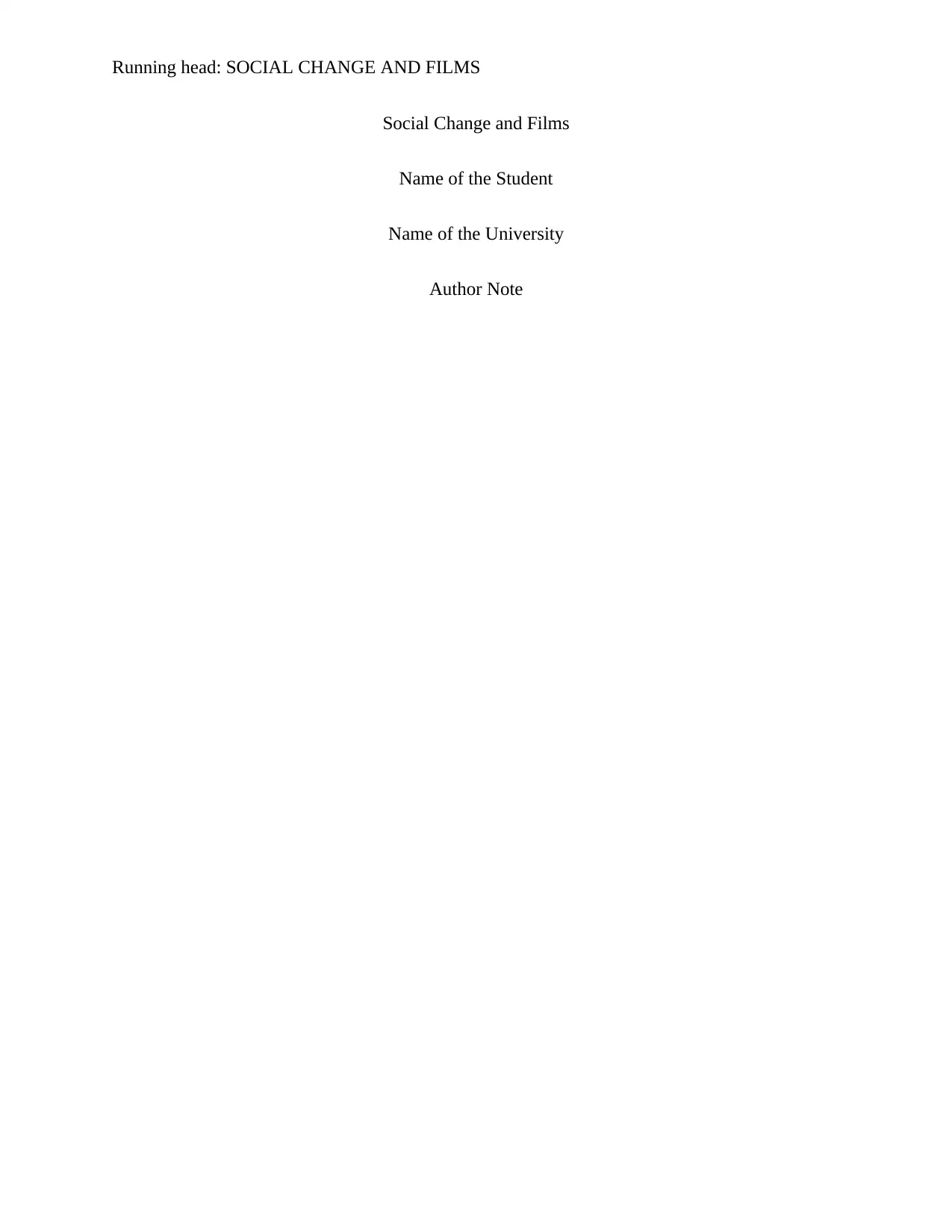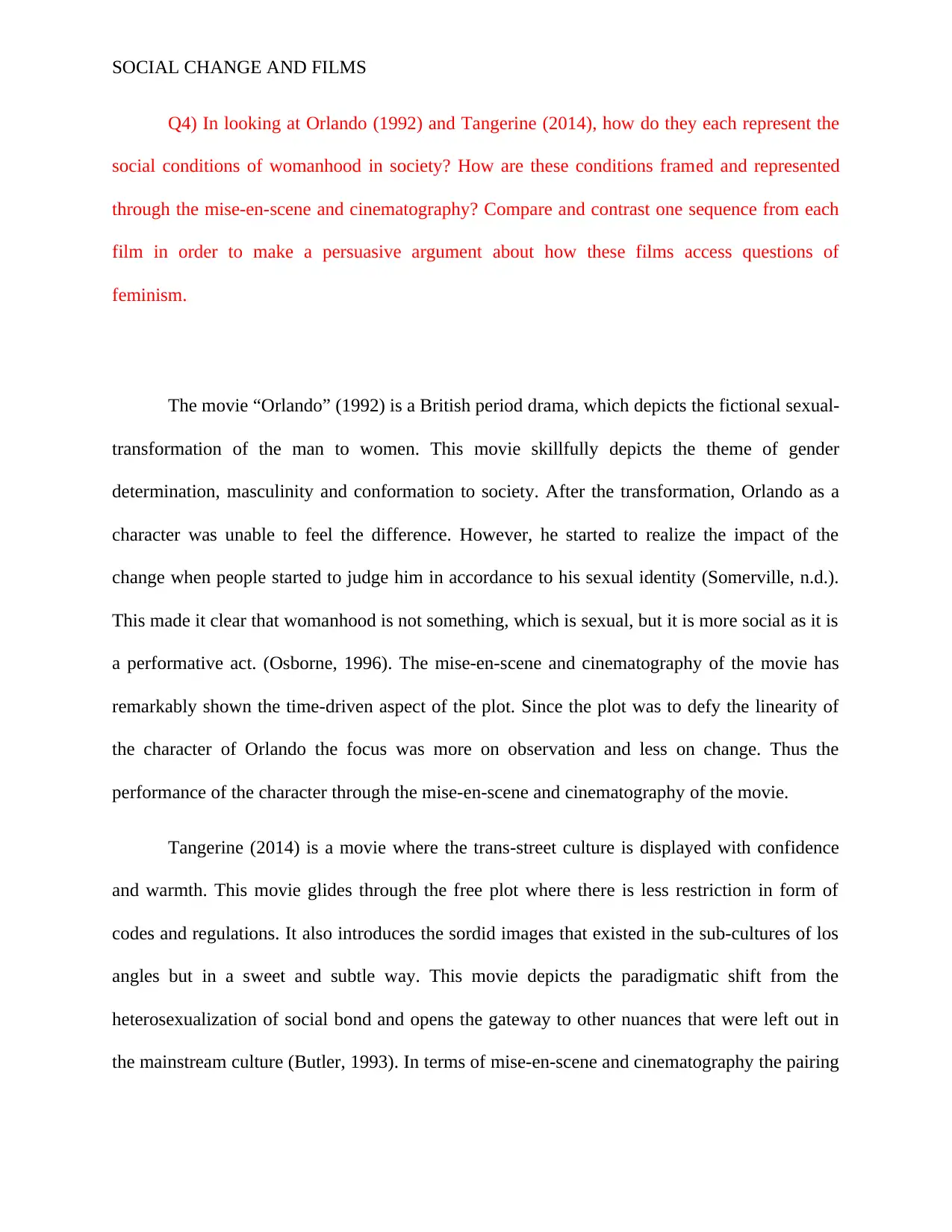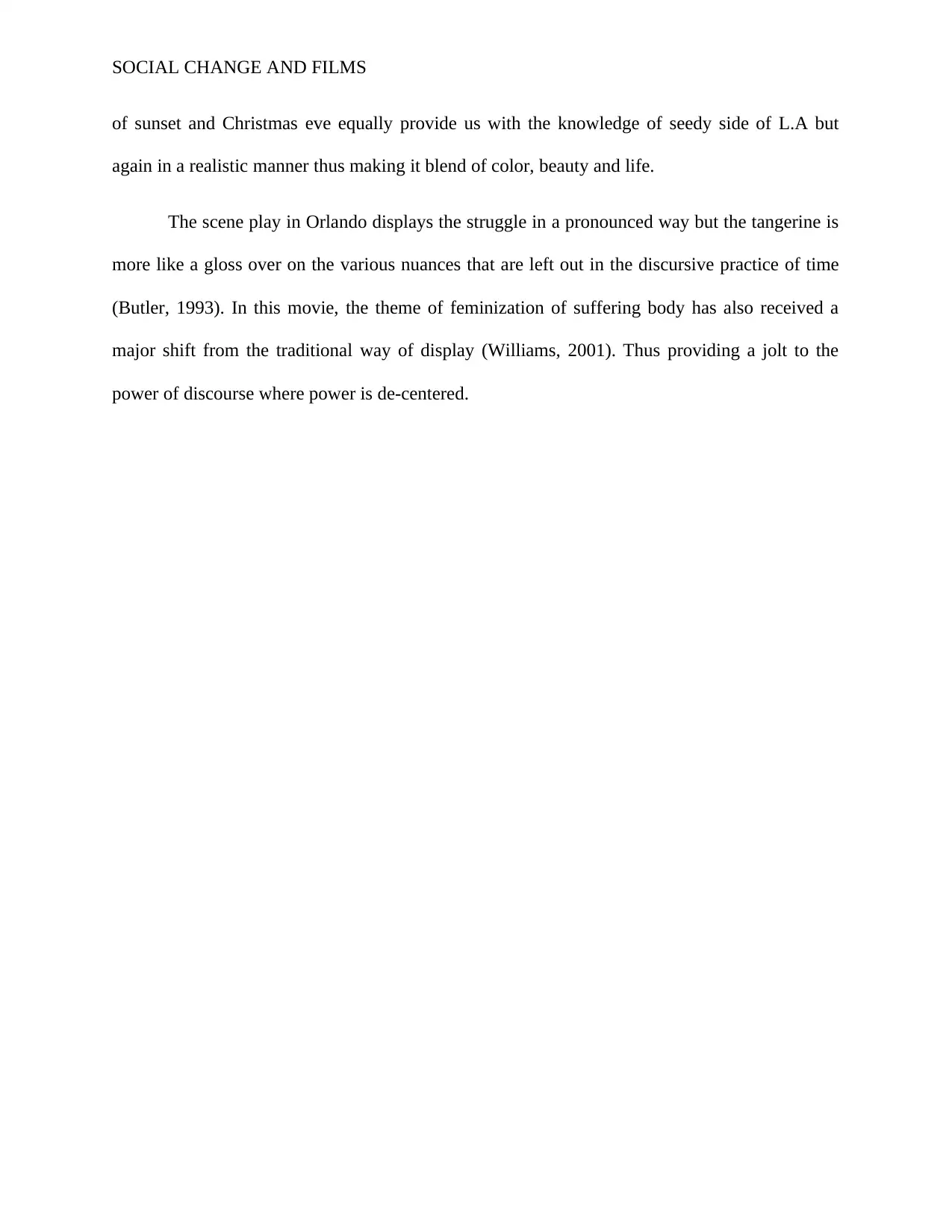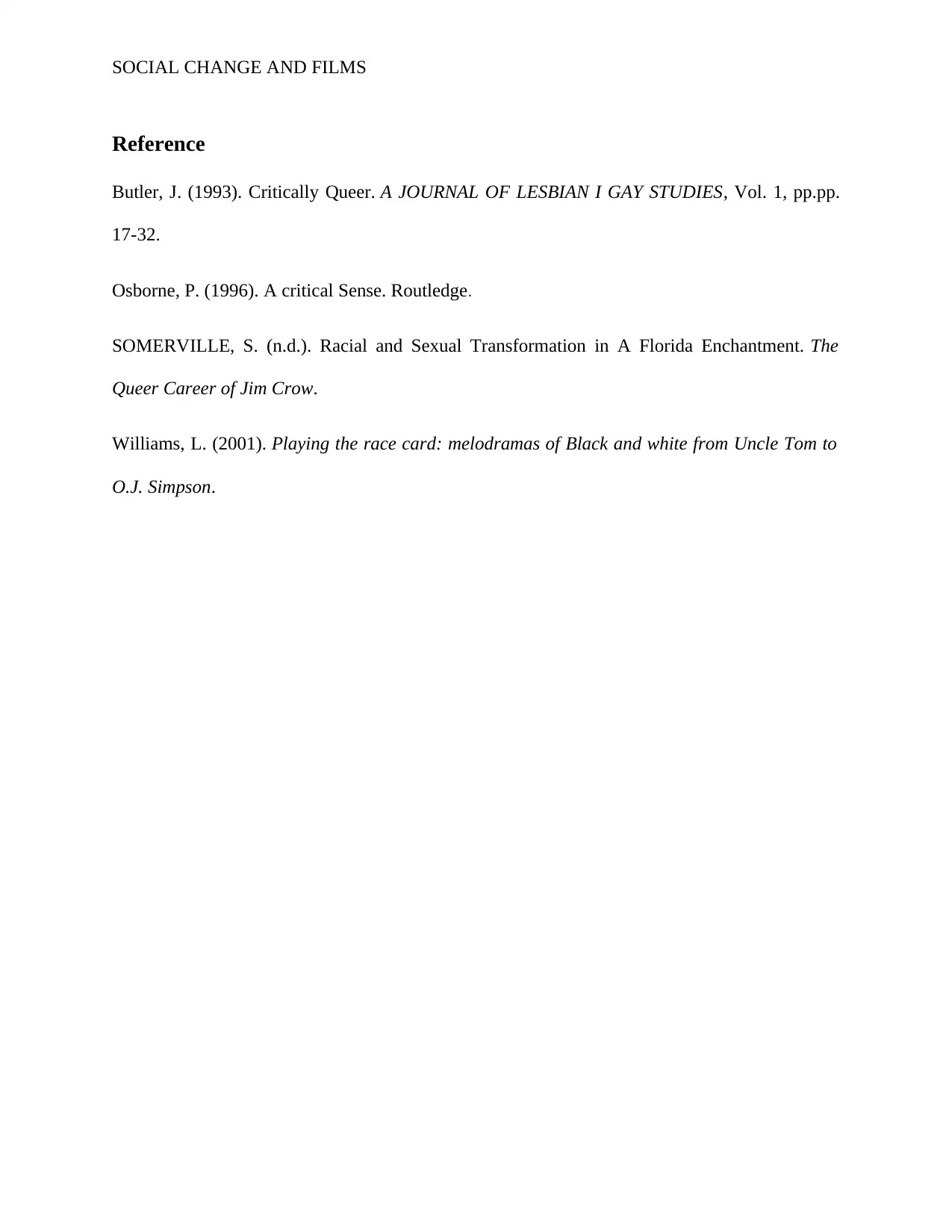Analyzing Social Conditions in Orlando and Tangerine Films
VerifiedAdded on 2023/04/26
|4
|577
|209
Essay
AI Summary
This essay analyzes the films "Orlando" (1992) and "Tangerine" (2014) to explore their representations of womanhood and social conditions. The essay examines how each film utilizes mise-en-scene and cinematography to frame these themes, focusing on the transformation of Orlando's character and the depiction of trans-street culture in Tangerine. It compares specific sequences from both films to argue how they engage with questions of feminism and challenge traditional representations. The analysis considers the films' approaches to gender identity, societal expectations, and the power of discourse in shaping perceptions of womanhood, drawing on critical perspectives from Butler, Williams, and Somerville to support its arguments. Ultimately, the essay aims to demonstrate how both films offer unique insights into the complexities of social change and gender representation in cinema.
1 out of 4





![[object Object]](/_next/static/media/star-bottom.7253800d.svg)